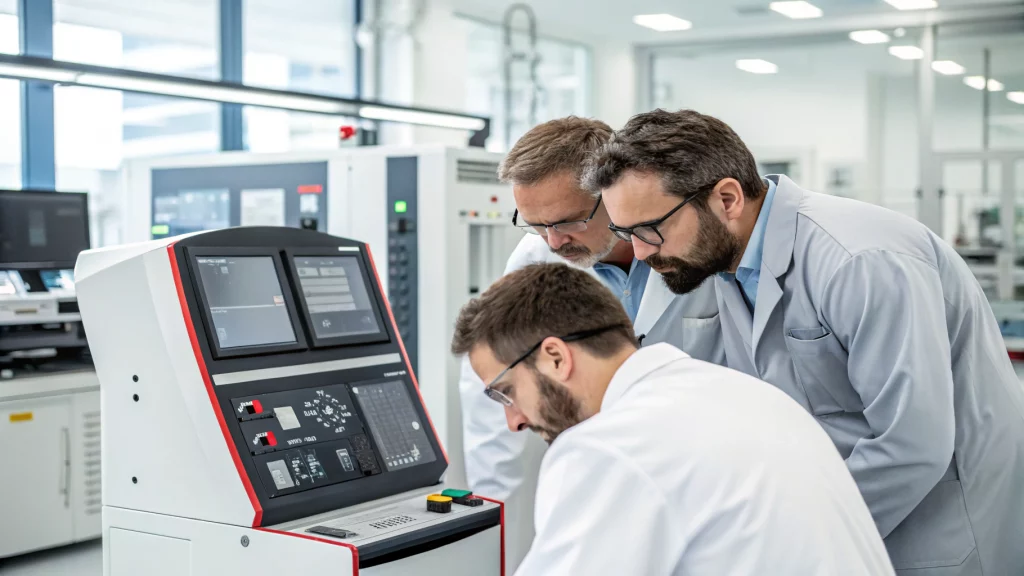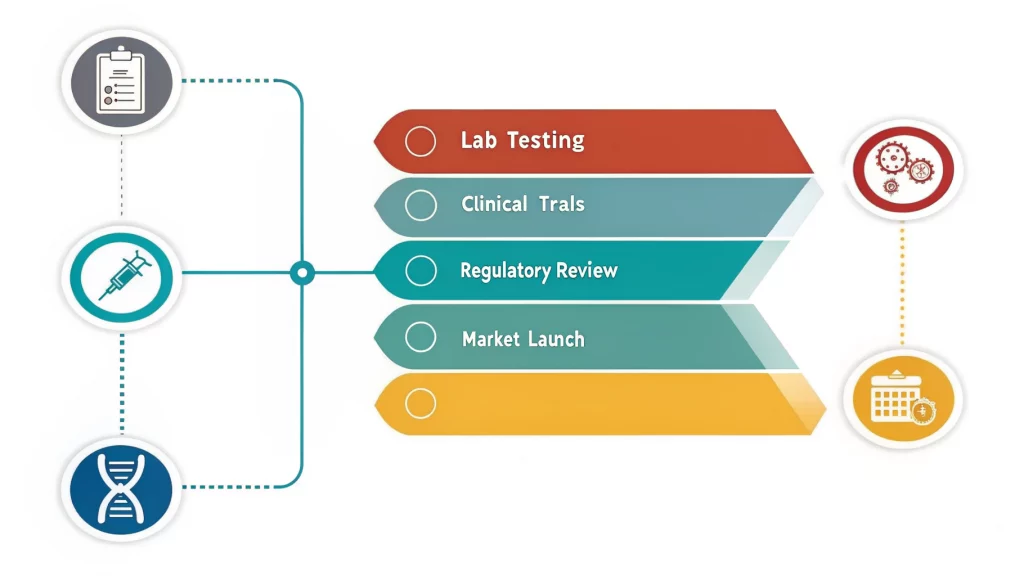Introduction
Did you know that companies with a clear mission and vision outperform those without by over 30%? In the fast-paced world of artificial intelligence (AI), this statistic becomes particularly glaring, as firms race to innovate while navigating complex ethical and practical challenges. Innov-AI-tive finds itself in this very landscape, grappling with the pressures and opportunities that the AI revolution presents.
As the AI landscape changes rapidly, many companies, including those in the forefront of tech innovation, sometimes lose focus and direction. This lack of clarity can hinder growth, stifle creativity, and make it difficult for teams to unite under a common purpose. Without a compelling mission and vision, organizations may struggle to differentiate themselves in a crowded marketplace, resulting in a loss of competitive edge.
This article aims to articulate the significance of having a well-defined mission and vision, particularly for companies like Innov-AI-tive, illustrating how these statements serve as guiding stars in the ongoing journey of innovation. By the end, industry professionals and organizations involved in AI development and implementation will not only understand why these statements matter but also how to craft their own effectively.

Understanding the Importance of Mission and Vision
At their core, mission statements define the fundamental purpose of an organization. They express what the company does, whom it serves, and its unique value proposition. On the other hand, vision statements articulate an organization’s long-term aspirations, painting a picture of what the future could look like if the company fulfills its mission successfully.
Clarity in both mission and vision provides numerous benefits:
- Guidance for Decision-Making: A well-crafted mission and vision guide strategic decisions, aligning teams around shared goals and priorities. For instance, when faced with a new project proposal, team members can evaluate whether it aligns with the company’s core mission and whether it moves the organization closer to its vision.
- Inspiration for Teams: Organizations with a clearly articulated mission and vision foster greater collaboration and motivation among employees. When team members understand not just the what but the why behind their tasks, their work becomes more meaningful.
- Communication with Stakeholders: External stakeholders—including customers, partners, and investors—benefit greatly from understanding a company’s purpose and goals. It can foster trust and create a more cohesive brand image. For example, as a leader in AI for personal safety technology, Innov-AI-tive can attract partners and consumers who are passionate about making the world a safer place.
In summary, missions and visions are not merely corporate jargon; they are instrumental in steering companies towards sustainable success.
Crafting Innov-AI-tive’s Mission and Vision
Creating a mission and vision statement for Innov-AI-tive involves an inclusive process that engages various stakeholders. Gathering input from team members across departments ensures that diverse perspectives and insights are represented, enhancing the richness of the statements.
First, it’s essential to focus on the core values and objectives that resonate with Innov-AI-tive’s identity. Why do we exist in this industry? What unique value do we offer? These questions lay the groundwork for crafting meaningful statements.
Engaging Stakeholders: Conducting brainstorming sessions or workshops involving team members allows for a collaborative atmosphere. Utilizing surveys or tools like Google Forms can facilitate a wider reach to gather insights from all levels within the organization.
Iterative Drafting: After initial inputs have been collected, drafting preliminary statements becomes the next step. At Innov-AI-tive, multiple iterations can refine and sharpen these drafts. Encouraging feedback from various teams can help in honing the language to resonate with a broader audience, ensuring that the mission and vision statements are aspirational yet grounded in reality.
For instance, Innov-AI-tive might draft a mission statement like, “Innov-AI-tive harnesses the power of AI to revolutionize personal safety measures, ensuring every individual has the right to safety and peace of mind.” Meanwhile, the vision statement might read, “To create a world where safety technology is seamlessly integrated into everyday life, protecting every individual through advanced AI solutions.” These formulations establish a direct line to the core beliefs of the company.

Real-World Examples of Impactful Mission and Vision Statements
To truly understand the impact of mission and vision statements, it’s helpful to examine other successful companies within the AI sector. Organizations like Google and Microsoft are prime examples. Google’s mission statement, “To organize the world’s information and make it universally accessible and useful,” provides clarity about its purpose. Meanwhile, its vision is about improving the user experience through innovation and constant enhancement of its services.
Another compelling case is IBM, which emphasizes its mission: “To lead in the creation, development, and manufacture of the industry’s most advanced information technologies.” Their vision statement prioritizes guiding clients through digital transformations, thereby providing a roadmap for the company’s future direction.
These examples not only illustrate the clarity that solid mission and vision statements can bring but also highlight how they can instigate a ripple effect within the organization. Companies with a solid sense of purpose are often more adept at adapting to challenges and seizing opportunities, leading to inspiring stories of success.
For instance, IBM’s commitment to diversity in AI ethics is driven by its mission, which has allowed it to lead discussions around responsible AI practices. Innov-AI-tive can draw inspiration from these giants by ensuring that its mission focuses on innovation in safety technologies, while its vision embraces social responsibility and transparency.
Actionable Steps for Implementing Mission and Vision in Strategy
Once Innov-AI-tive has crafted its mission and vision statements, the real work begins: implementation. There’s no value in these statements if they’re merely framed and hung on a wall.
Strategic Integration: The company should fully integrate its mission and vision into its strategic planning processes. This means referencing them in annual reports, project proposals, and operational strategies, effectively embedding these guiding principles into the organizational culture.
Marketing and Communication: Utilizing mission and vision statements in marketing communication fortifies the brand message. For instance, social media campaigns can explicitly state how Innov-AI-tive’s products align with its commitment to personal safety, reminding customers of what the brand stands for with every promotional message.
Periodic Review: The business landscape, especially in AI, is ever-evolving. It’s essential to revisit and revise mission and vision statements periodically to ensure they remain relevant and deeply inspiring. This could be done annually or bi-annually through stakeholder feedback sessions, adapting the statements in response to technological advancements, market conditions, and shifts in consumer expectations.
This implementation approach reinforces the idea that the mission and vision are living statements that are integral to the identity of Innov-AI-tive.
Future Outlook: The Role of Mission and Vision in Sustainable Innovation
Looking ahead, the adaptability of Innov-AI-tive’s mission and vision will be vital as technology continues to evolve. In a world increasingly reliant on AI, where ethical challenges and societal norms are in flux, the company must ensure its statements reflect an ongoing commitment to responsible innovation.
Adaptability: As trends change and new technologies emerge, revisiting these statements will help Innov-AI-tive stay aligned with both the market and consumer needs. The company has to cultivate an environment where ongoing dialogue about mission and vision occurs at all levels. This encourages organic progress and development within the organization and ensures that its direction remains relevant.
Addressing Global Challenges: Furthermore, Innov-AI-tive can embrace mission-driven innovation to tackle pressing global challenges. By keeping its mission focused on enhancing personal safety through AI, the company positions itself to contribute to broader societal goals, such as reducing crime rates and improving community well-being.
As AI continues to transform various sectors, commentary around ethical considerations, inclusivity, and technology’s societal responsibilities will be paramount. Thus, generating discussions on evolving mission and vision statements can trigger vital conversations around how AI can serve humankind.
Conclusion
In summary, a robust mission and vision statement is essential for directing company strategies and inspiring teams within the ever-shifting AI landscape. Innov-AI-tive’s commitment to driving innovation is anchored in carefully crafted statements that reflect our purpose and aspirations. By understanding the importance of these guiding principles and engaging in an inclusive crafting process, Innov-AI-tive not only positions itself for success but also sets a precedent for other companies within the industry.
We invite you to share in the comments how your organization approaches its mission and vision statements. If you haven’t established them yet, what would be your key focus areas?

